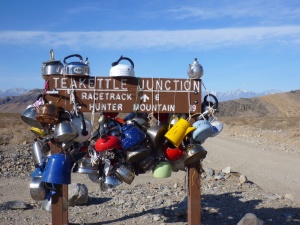There were times this summer when it seemed like the whole southwest might go up in smoke. Huge wildfires destroyed acres of forests and dozens of homes in Arizona in June and Texas in September. The National Ocean and Atmosphere Association reports that 7.7 million acres have burned this year, about 1.3 million shy of the 12-year record for January-September, which was set in 2006. Although Arizona and Texas were the headlines, fires were burning across the west, plus in Minnesota, the largest fire the state has seen since 1918. The map below shows the distribution of large fires burning on Sept 1st.

National Interagency Fire Center map for Sept 1st, 2001
In June, 4.7 million acres had already burned, by far the largest burnt acreage on record in June. Usually, the fire season pick up later in the summer, as hot weather dries out the spring vegetation, but this year June was already hot and dry. The Wallow Fire, Arizona’s largest fire on record, burned half a million acres during the month of June. According to NOAA, nearly a 1,000 fire-fighting crews battled the blaze.
There has been a significant increase in the number, size, and intensity of wildfires in the US since about the mid 1980s. While increasing fire intensity is linked to fire-suppression history, research also suggests that climate change is a driving factor. Higher spring and summer temperatures and earlier snow-melt trends are causing significant increases in wildfire incidents, shown by data from areas like the Nothern Rocky Mountains, where there was little history of fire suppression, according to a 2006 article in Science.
If increases in wild land fires is going to become a new normal in our warming world, it makes the question of post-fire restoration increasingly relevant. In ecosystems adapted to fire, like lodgepole pine forest, low intensity fires are good. The pine-cones do not release their seeds until cued by a fire, which typically opens up some canopy so that the new seedlings recieve some sunlight. In other ecosystems, like the Mojave desert, fire is not naturally a frequent event. However, changing climate and exotic grasses has made fires increasing frequent and destructive. After a burn, native species are not adapted to resprout or seed, and the exotic grasses gain even more territory, potentially leading to more fires.
Research teams across the west and southwest are testing a variety of post-fire restoration techniques, aimed at protecting ecosystems from the establishment of exotics or just encouraging natural re-growth. Methods under investigate include artificially applying seeds of native plants by hand or helicopter, soil treatments, and keeping cattle off of the range-land. How these restoration efforts develop will play a huge role in how the southwestern landscape will look after another decade or two of record-setting fires. I’ll be looking into more research on post-fire restoration’s hopes and challenges soon.



